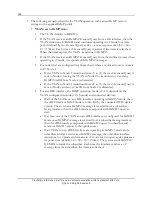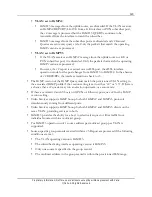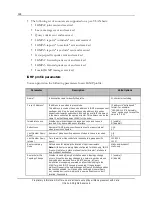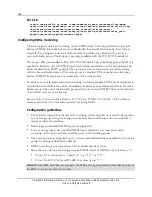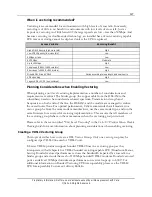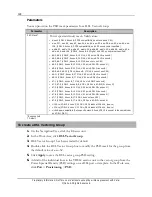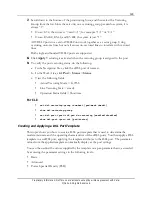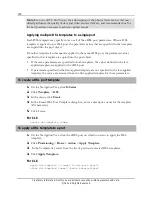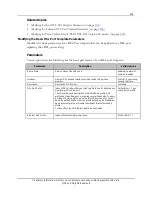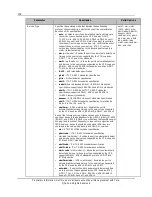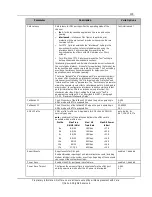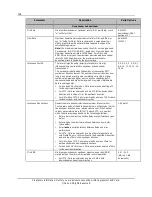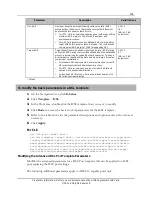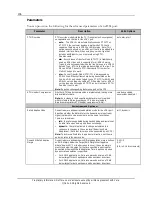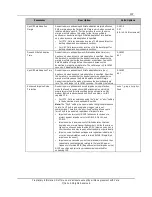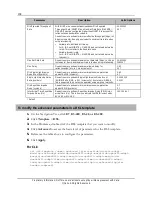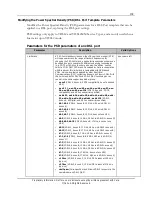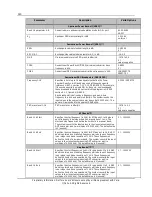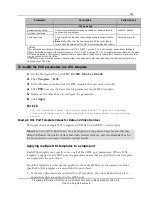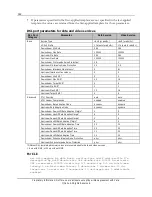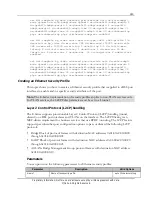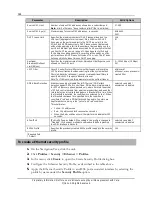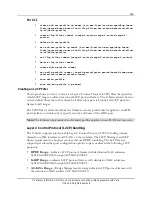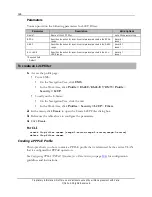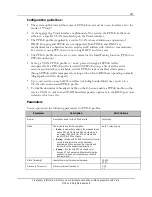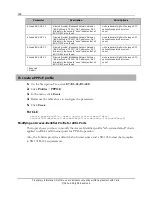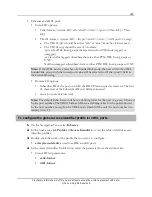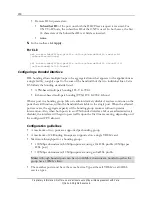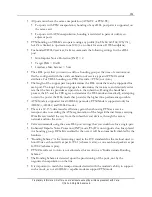
136
Proprietary Information: Not for use or disclosure except by written agreement with Calix.
© Calix. All Rights Reserved.
Parameters
You can provision the following for the advanced parameters of an xDSL port:
Parameter
Description
Valid Options
PTM Override
PTM override mode dictates the TC (Transmission Convergence)
encapsulation on the line for the xDSL port.
auto
– The VDSL2 card automatically chooses PTM-TC or
ATM-TC if the customer deploys a multimode CPE that is
capable of training up in VDSL2 or ADSL mode. Note: This
option cannot be used on an xDSL port that is to be added to a
bonded interface. Note: When using any service-type that
includes adsl2/adsl2+, you must avoid using PTM-
Override=auto.
atm
- Asynchronous Transfer Mode (ATM-TC) is traditionally
used on ADSL lines and is supported for all ADSL Service
Types, but is not supported when the line trains up in a VDSL2
Service Type. ATM cells are being transmitted on the line. The
DSL port MUST be set to PTM-Override=ATM in order for
Multi-VC support to work.
ptm
- Packet Transfer Mode (PTM-TC) is always used on
VDSL2 lines. Ethernet frames are being transmitted on the
line. An xDSL port can be forced to use PTM-TC for ADSL and
ADSL2+ service types by setting PTM Override to ptm. ADSL1
service types do not support PTM-TC and will not work if PTM
Override is set to ptm.
Note:
Requires corresponding feature support on the CPE.
auto, atm, ptm ‡
ATM Header Compression
Whether ATM header compression is implemented, leaving more
bits available for data.
Note:
An increase in the downstream data rate is only realized
with this feature if Broadcom-based CPE also implements
Broadcom-proprietary ATM header compression (Nitro).
selected=enabled,
unselected=disabled ‡
Downstream and Upstream
Rate Adaption Mode
Downstream or upstream rate adaptation mode for the xDSL port.
Specifies whether the data rate for the downstream or upstream
signal is allowed to vary dynamically as the noise level varies.
There are two values:
init
– the rate is negotiated during handshaking and remains at
its initial rate upon train-up and does not change.
dynamic
– the rate is allowed to change automatically in
response to changes in the noise level (Seamless Rate
Adaptation). (Note that this may not be supported by all CPE.)
Note:
To achieve a fixed rate in a particular direction, set the min
and max rates to the same value.
init ‡, dynamic
Downshift Rate Adaption
Margin
Downstream or upstream downshift rate adaptation margin defines
an SNR margin below the Target SNR Margin that triggers a
bitrate "downshift." For the decrease to occur, the noise margin
must stay below this value for the time specified in upstream or
downstream Downshift Rate Adaptation Time. Applies only when
dynamic rate adaptation is specified.
For ADSL2 applications, Calix recommends a value of 3 dB
below target for both upstream and downstream directions.
For VDSL2 applications, Calix recommends a value of 5 dB
below target for both upstream and downstream directions.
0.0-31.0
9.0 ‡
(dB, in 0.1 dB increments)

